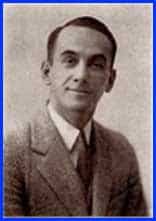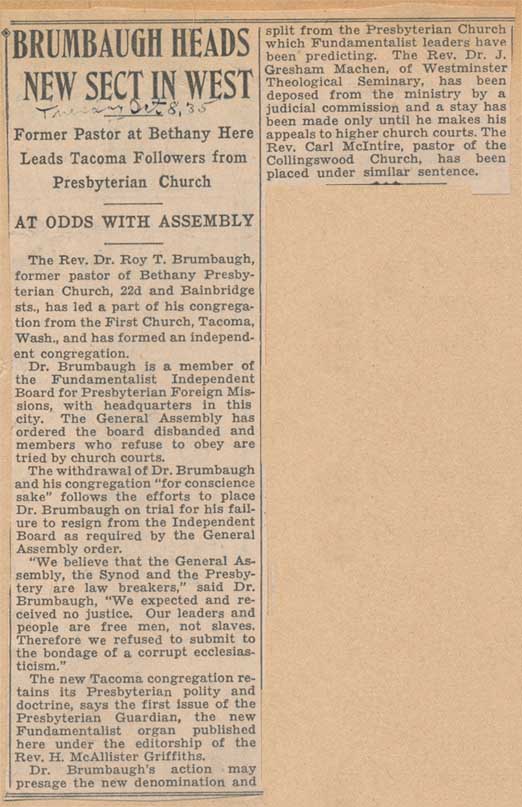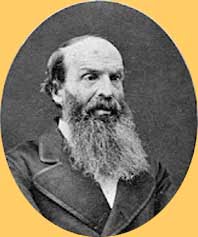Today we come to Chapter VIII of PRESBYTERIANISM FOR THE PEOPLE. In this chapter our author, Rev. Robert P. Kerr, gives us a glimpse of a late nineteenth century ecumenical effort among Presbyterians world-wide. How the ecclesiastical landscape has changed in the intervening years! Today, the World Reformed Fellowship and the International Conference of Reformed Churches are the two global ecumenical works formed by conservative Presbyterian and Reformed denominations.
CHAPTER VIII.
THE GENERAL COUNCIL.
This assembly is composed of delegates from the various Presbyterian or Reformed churches throughout the world. It held its first regular meeting in Edinburgh, Scotland, in July, 1877, and will meet triennially in different countries. It has no authority over the churches belonging to it, but can only advise. It is intended to show the world that the various branches of the Presbyterian family are one, to bring their united influence to bear against sin, to help and encourage feeble churches, and to arrange for the formation of native churches among the heathen, gathering into them the converts of the missions of the various Presbyterian churches.
The formation of this body was earnestly desired by the Reformers of the sixteenth century, but was not effected until quite recent times. Much good has already come from the alliance of very many of the divisions of the Presbyterian body, and still greater results are confidently expected.
The following is a catalogue of the organizations holding the Presbyterian faith and order represented by this council:
CONTINENT OF EUROPE.
AUSTRIA.
Evangelical Reformed Church of Hungary.
Reformed Church of Moravia.
Reformed and Evangelical Church of Bohemia.
BELGIUM.
Union of Evangelical Congregations.
FRANCE.
Synod of the Union of Evangelical Congregations.
National Reformed Church.
ITALY.
Waldensian Church.
Free Church of Italy.
GERMANY.
Free Reformed Church of Germany.
Old Reformed Church of East Friesland.
NETHERLANDS.
Reformed Church of the Netherlands.
Christian Reformed Church of the Netherlands.
SPAIN.
Spanish Christian Church.
SWITZERLAND.
Berne French Church.
Evangelical Church of Neuchatel.
Reformed Church of Canton de Vaud.
Free Church of Canton de Vaud.
Reformed Church of Geneva.
UNITED KINGDOM OF GREAT BRITAIN AND IRELAND.
ENGLAND.
Presbyterian Church of England.
IRELAND.
Presbyterian Church of Ireland.
Reformed Church of Ireland.
SCOTLAND.
Established Church of Scotland.
Free Church of Scotland.
United Presbyterian Church
Reformed Presbyterian Church.
Original Secession Church.
WALES.
Calvinistic Methodist (Presbyterian) Church.
BRITISH COLONIES AND DEPENDENCIES.
CANADA.
Presbyterian Church in Canada.
CAPE OF GOOD HOPE.
Dutch Reformed Church in South Africa.
CEYLON.
Presbytery of Ceylon.
EASTERN AUSTRALIA.
Synod of Eastern Australia.
NATAL.
Dutch Reformed Church.
Presbytery of Natal.
Christian Reformed Church of South Africa.
NEW HEBRIDES.
Mission Synod of New Hebrides.
NEW SOUTH WALES.
Presbyterian Church of New South Wales.
NEW ZEALAND.
Presbyterian Church of New Zealand.
ORANGE FREE STATE.
Dutch Reformed Church of Orange Free State.
OTAGO AND SOUTHLAND.
Presbyterian Church of Queensland.
SOUTH AUSTRALIA.
Presbyterian Church of South Australia.
TASMANIA.
Presbyterian Church of Tasmania.
VICTORIA.
Presbyterian Church of Victoria.
UNITED STATES.
Presbyterian Church in the United States of America. (Northern).
Presbyterian Church in the United States (Southern).
Reformed (Dutch) Church in America.
Reformed (German) Church in the United States.
Associate Reformed Synod of the South.
General Synod of the Reformed Presbyterian Church.
Synod of the Reformed Presbyterian Church in America.
United Presbyterian Church of North America.
Welsh Calvinistic Methodist (or Presbyterian) Church in America.
These Presbyterian bodies scattered all over the globe, including above forty millions of people, have at last, in “The General Alliance of Reformed or Presbyterian Churches,” found a tie which binds them together. It is proposed thus to combine our forces, to magnify our grand institutions of government and theology, and to remove the stigma of discord which has so often been affixed to the Presbyterian name.
But there is a higher name than Presbyterian. It is CHRISTIAN. Under that name all the followers of Christ at last shall be ONE.
Next Saturday, with Chapter IX, we will come to the topic of Deacons.

![Amasa Converse, D.D. [21 August 1795 - 9 December 1872]](https://thisday.pcahistory.org/wp-content/uploads/2012/08/ConverseAmasa.jpg)





